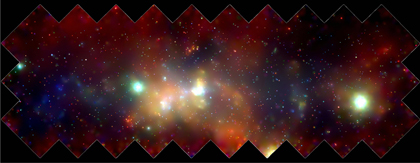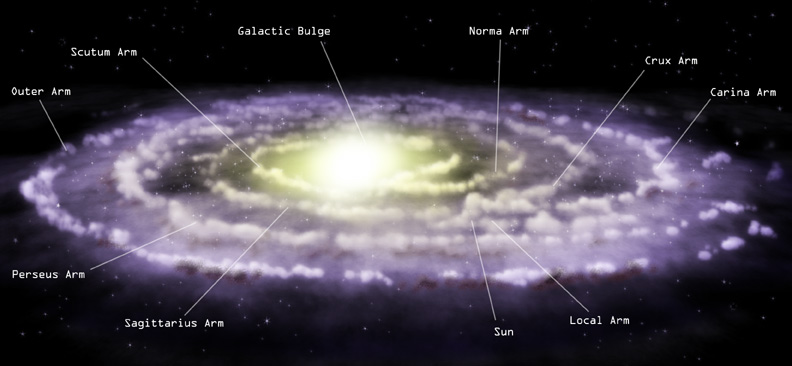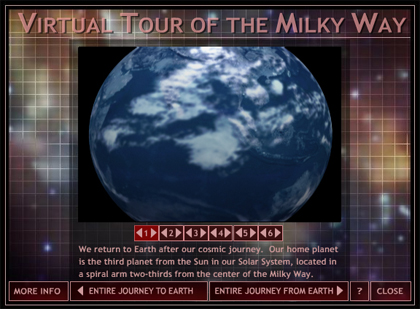Taking Our Galactic Self-portrait
One of Chandra's most iconic images is that of the center of our Galaxy. We should say, more accurately, that this image is just a small piece of Milky Way's center. This image - which stretches some 900 light years in one direction and 400 light years in the other - is actually a montage of 30 separate Chandra images that have been stitched together to create this stunning X-ray tableau. Even with all of that data, this image still only represents a small fraction of the plane of the Milky Way, which stretches some 100,000 light years across (again, compared to just 900 light years in our image.) But even in that relatively small space, we see how amazing our Galaxy is. There's a supermassive black hole and hundreds of other objects, including neutron stars, smaller black holes, stars and more.

But when do we get a full picture of the Milky Way? The answer is we don't. Since our Solar System is embedded within our Galaxy, we never get a real astronomical image of what it looks from the outside as produced by a telescope. (What we see when we are "looking" at a complete picture of the Milky Way is an artist's representation - or another spiral galaxy that is standing in as its stunt double.)

From our vantage point in the plane of the Galaxy – somewhere in the suburbs, about 26,000 light years from the center -- we only have an edge-on view of the Milky Way. But this view is still very useful, especially when scientists combine information from different types of astronomical observations. Some data sets trace the spiral arms of our Galaxy, while others are better for detecting the stars, and still others are good for tracing the gas and dust. X-rays from Chandra reveal hundreds of white dwarf stars, neutron stars, and black holes in an incandescent fog of multimillion-degree gas. The supermassive black hole at the center of the Galaxy is located inside the bright white patch in the center of the Chandra image. Therefore, we can ultimately get a pretty good "picture" of the Milky Way. But this isn't done directly. Rather, our Galactic self-portrait comes together when data from many telescopes - including Chandra - are brought together and studied.

- Martin Elvis
Category:
- Log in to post comments
